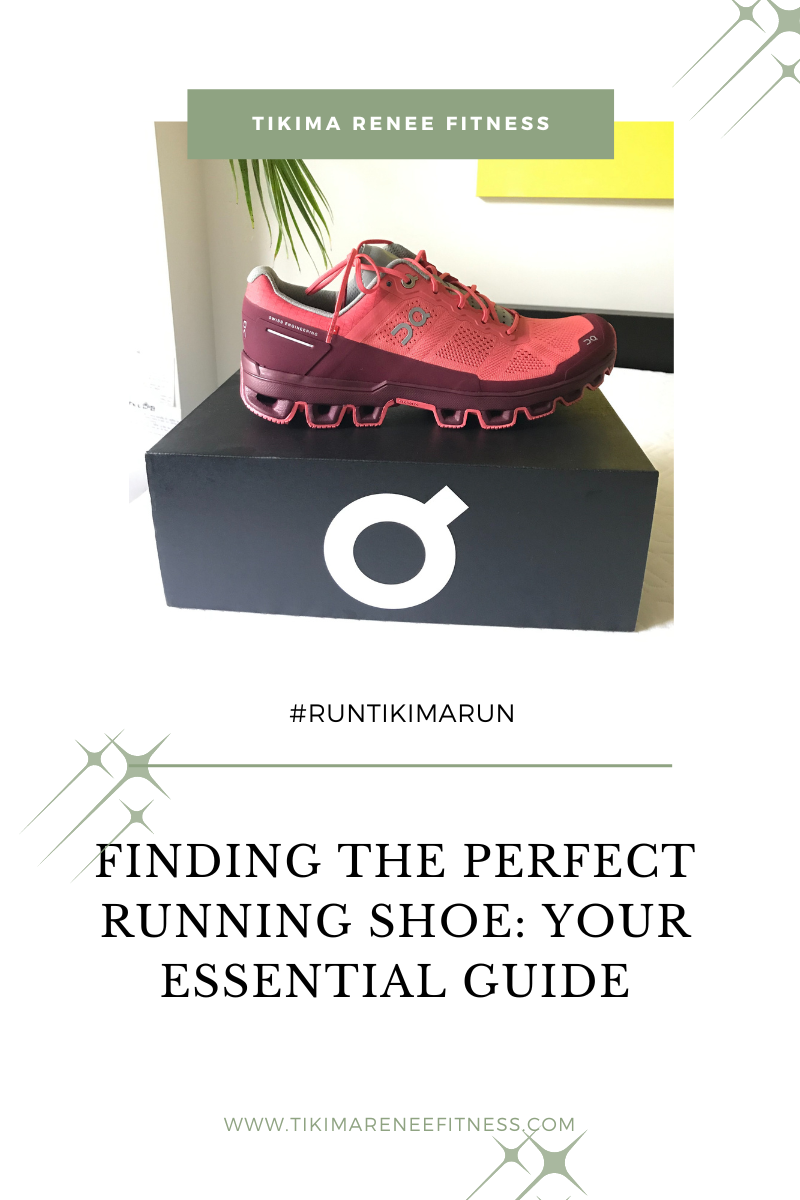FINDING THE PERFECT RUNNING SHOE: YOUR ESSENTIAL GUIDE
- TIKIMA THOMPSON

- Jul 29, 2023
- 3 min read

I am in full swing in #UltraTraining and it got me reflecting on my long and exhausting quest to find the perfect pair of running shoes. Take it from me, finding the perfect pair of running shoes can be a daunting task. With numerous brands, styles, and technologies available, choosing the right running shoes can significantly impact your performance, comfort, and overall running experience. Whether you are training for an Ultra or just starting your fitness journey, this guide will walk you through the essential factors to consider when selecting your ideal running shoes.
Understand Your Foot Type
Before diving into the vast sea of running shoe options, it's crucial to understand your foot type. There are three basic foot types: neutral, pronated, and supinated (What are these foot types? Check out my post sharing runner's terminology for an explanation). Knowing your foot type will help you determine the level of support and cushioning you need in your running shoes. Visit a specialized running store or consult with a podiatrist to get a professional assessment of your foot type. My homie Alexis from Flecksoflex.com wrote an in-depth blog post on Why You Should Get Fitted For Running Shoes check it out.
Consider Your Terrain Preference
Consider your running terrain preferences. Are you a road runner, a trail enthusiast, or a mix of both? Running shoes are designed to cater to specific surfaces. Road running shoes typically offer more cushioning and lightweight designs, while trail running shoes provide additional traction, stability, and protection against uneven terrains.
Find the Right Fit
Getting the right fit is crucial for comfort and injury prevention. When trying on running shoes, consider the following tips:
Measure your feet: Feet can change size over time, so measure both feet and go shoe shopping in the afternoon or evening when your feet are slightly swollen.
Allow space: Ensure that there is a thumb's width of space between your longest toe and the shoe's end. This allows for natural movement during running.
Try different brands and models: Different brands and models have varying fits. Experiment with a few options to find the one that suits you best.
Consider width: Some brands offer different widths to accommodate wider or narrower feet. Look for options if you have specific width requirements.
Cushioning and Support
Cushioning and support are crucial factors to consider based on your foot type and running style. Different running shoes offer various levels of cushioning and support. Cushioning helps absorb impact and reduces stress on your joints, while support helps correct overpronation or supination.
Test Them Out
Once you've narrowed down your options, take the shoes for a test run. Most specialty running stores allow customers to try out shoes on a treadmill or offer a return policy if the shoes don't work out. Take advantage of these opportunities to gauge how the shoes feel during running, paying attention to comfort, stability, and any discomfort or pressure points.
Durability and Price
Running shoes are an investment, and finding a balance between durability and price is essential. While higher-priced shoes often offer more advanced features and durability, there are also budget-friendly options available. Consider the amount of mileage you plan to put on the shoes and weigh it against your budget.
Replace Them at the Right Time
Even the best running shoes have a lifespan. As a general guideline, running shoes should be replaced every 300-500 miles or when you notice signs of wear and tear, such as flattened cushioning or worn-out treads. For some strange reason replacing my running shoes at the right time is difficult for me but there's an app for that. I use the app ShoeCycle but I have heard that running apps could remind you as well. Continuing to run in worn-out shoes can lead to discomfort, increased risk of injuries, and decreased performance and we do not want that.
Finding the perfect running shoes is a personalized process that requires careful consideration of various factors. By understanding your foot type, running style, and preferences, you can make an informed decision. Remember to prioritize comfort, support, and durability to enhance your running experience and reduce the risk of injuries. With the right pair of running shoes, you'll be well-equipped to conquer the miles ahead. Lace-up, hit the road, and enjoy the journey Homies!



Comments